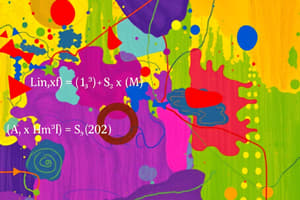Podcast
Questions and Answers
What is the significance of the completeness of the real number system in real analysis?
What is the significance of the completeness of the real number system in real analysis?
It allows us to define concepts such as limits and the continuity of functions.
What distinguishes real numbers from other number systems like the natural numbers or rational numbers?
What distinguishes real numbers from other number systems like the natural numbers or rational numbers?
The completeness property.
What are some key properties that real numbers satisfy as a field?
What are some key properties that real numbers satisfy as a field?
Closure under addition and multiplication, associative, commutative, and distributive properties, identity elements, and zero property of additive inverse.
Explain the closure property of real numbers under addition and multiplication.
Explain the closure property of real numbers under addition and multiplication.
What are the identity elements present in the field of real numbers?
What are the identity elements present in the field of real numbers?
What is the significance of the multiplicative inverse of a non-zero real number?
What is the significance of the multiplicative inverse of a non-zero real number?
Define the convergence of a sequence of real numbers.
Define the convergence of a sequence of real numbers.
What does the transitivity property of real numbers state?
What does the transitivity property of real numbers state?
Explain the trichotomy property of real numbers.
Explain the trichotomy property of real numbers.
How do order properties of real numbers enable the formation of an ordered field?
How do order properties of real numbers enable the formation of an ordered field?
Study Notes
Real Analysis: Unraveling the Foundations of Calculus and Beyond
Real analysis is a branch of mathematics that deals with the properties of real numbers and their applications. This field is essential for understanding the concepts and principles underlying calculus and, more broadly, classical analysis. Let's explore some of the central ideas and subtopics within real analysis:
Completeness of Real Numbers
At the heart of real analysis is the concept of the completeness of the real number system, which states that every non-empty set of real numbers with an upper bound has a least upper bound, known as its supremum. This property distinguishes real numbers from other number systems, such as the natural numbers or rational numbers, and allows us to define the concept of limits and the continuity of functions.
Field Axioms and Properties
Real numbers form a field, which means they satisfy certain axioms and properties. These properties include:
- Closure under addition and multiplication: Every two real numbers have a unique sum and product, respectively, which are also real numbers.
- Associative, commutative, and distributive properties: Addition and multiplication are associative, commutative, and distribute over each other.
- Identity elements and zero property of additive inverse: There exists an additive identity element (zero property of addition) and a multiplicative identity element (zero property of multiplication).
- Inverse property of multiplication: Every non-zero real number has a unique multiplicative inverse.
These field axioms serve as a foundation for real analysis, as they allow us to perform algebraic operations on real numbers.
Convergence of Sequences
The convergence of sequences of real numbers is a fundamental concept in real analysis. A sequence of real numbers converges if it approaches a particular real number called the limit as the number of terms in the sequence increases. Convergent sequences are essential for defining derivatives and integrals, which are central concepts in calculus.
Order Properties of Real Numbers
Real numbers have a natural order, which means that some real numbers are greater than others. The order properties of real numbers allow us to make comparisons and perform operations (like finding the supremum and infimum of a set of numbers) on sets of real numbers. Some order properties include:
- Comparability: Every two real numbers are comparable, meaning that either one is greater than, equal to, or less than the other.
- Transitivity: If A > B and B > C, then A > C.
- Trichotomy: For any two real numbers A and B, exactly one of the following holds: A > B, A = B, or A < B.
These order properties allow us to make sense of the relationships between real numbers and enable the formation of an ordered field.
Real analysis is a fascinating and foundational area of mathematics that has applications across the sciences. While we've only scratched the surface of this rich and complex subject, the concepts introduced here lay the groundwork for deeper exploration and understanding of real analysis.
Studying That Suits You
Use AI to generate personalized quizzes and flashcards to suit your learning preferences.
Description
Test your knowledge of real analysis concepts such as completeness of real numbers, field axioms, convergence of sequences, and order properties of real numbers. This quiz dives into the fundamental ideas that underpin calculus and classical analysis.




